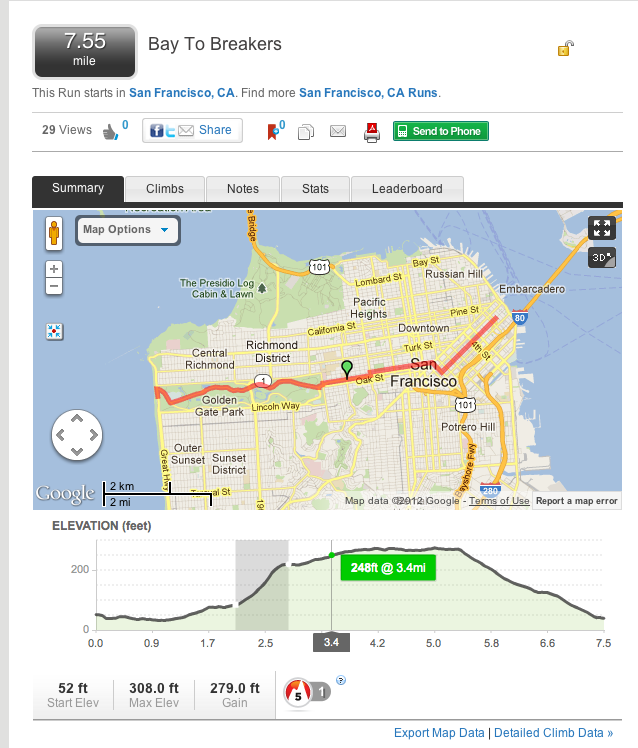If you live in San Francisco, chances are you’ve heard of a “little” running event happening this Sunday, May 20: The Bay to Breakers race, having taken place every single year since 1912, is an institution. It is said to be the biggest party in running. Also, reportedly, in addition to the serious runners, there are those who “run” it drunk and/or naked, but that’s perhaps a story for another publication. As a race-loving runner who moved to the Bay area less than two years ago, this year is my first chance to run Bay to Breakers. And since I live in South Bay, it is also my first chance to run across San Francisco and its infamous hills. I didn’t have time to test-run the course — a decision I may regret on Sunday. But two days before the race, I decided to study the elevation maps and see where and just how bad is that hill on top of which the drunk people reportedly double over and return their breakfast. The official map provided by the race organizers was fun, but hardly any help. (Really, guys? A gif image? In the age of Google maps?) So I headed over to MapMyRun.com, where runners can map their runs or search (and study) those of other runners. Below is a screenshot of the map of the Bay to Breakers course; and here is the link: 


The Dangers of Scale: Visualizing the Hills of Bay to Breakers


Subscribe to our blog
Sign up to receive Rock Content blog posts
Related Posts
From Meta to Cara: Where Artists Reclaim Their Creative Freedom

Order badass content with WriterAccess. Just as we do.
Find +15,000 skilled freelance writers, editors, content strategists, translators, designers and more for hire.
Want to receive more brilliant content like this for free?
Sign up to receive our content by email and be a member of the Rock Content Community!
Talk to an expert and enhance your company’s marketing results.
Rock Content offers solutions for producing high-quality content, increasing organic traffic, building interactive experiences, and improving conversions that will transform the outcomes of your company or agency. Let’s talk.




